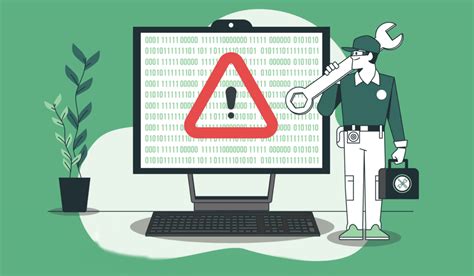Are you tired of dealing with frustrating tech issues that seem to slow down your daily life? Whether it's a slow computer, a malfunctioning smartphone, or a glitchy internet connection, tech problems can be a real pain. But the good news is that there are often simple and effective ways to fix these issues quickly and easily. In this article, we'll explore five ways to fix common tech issues fast, so you can get back to what matters most.
Understanding the Root Cause of Tech Issues
Before we dive into the solutions, it's essential to understand the root cause of tech issues. Often, these problems can be attributed to simple mistakes, outdated software, or faulty hardware. By identifying the source of the issue, you can take steps to prevent it from happening again in the future. This might involve updating your software, cleaning out dust from your computer, or using a more secure password.

1. Restart Your Device
One of the simplest and most effective ways to fix tech issues is to restart your device. This might seem obvious, but it's surprising how often a simple reboot can resolve a problem. When you restart your device, you're essentially giving it a fresh start, which can help to clear out any temporary glitches or bugs that may be causing the issue. This works because many devices, including computers and smartphones, have a tendency to accumulate temporary files and data that can slow them down over time.
2. Check for Software Updates
Outdated software can be a common cause of tech issues, so it's essential to keep your software up to date. This includes your operating system, browser, and any other apps or programs you use regularly. When you update your software, you're ensuring that you have the latest security patches and bug fixes, which can help to prevent issues from arising in the future. To check for software updates, simply go to your device's settings or control panel and look for the "update" option.

3. Use Online Resources
When you're faced with a tech issue, it can be tempting to call in a professional or take your device to a repair shop. But before you do that, it's worth trying to troubleshoot the issue yourself using online resources. There are many websites and forums dedicated to tech support, where you can find answers to common questions and solutions to specific problems. Some popular online resources include Google, YouTube, and online forums dedicated to your device or software.
4. Clean Out Dust and Dirt
Dust and dirt can be a common cause of tech issues, particularly when it comes to computers and other devices with fans. When dust builds up inside your device, it can cause overheating and slow down your device's performance. To clean out dust and dirt, simply use a soft brush or compressed air to gently remove any debris from the vents and fans. This can help to improve airflow and keep your device running smoothly.

5. Use Troubleshooting Guides
Finally, if you're still having trouble fixing your tech issue, it may be worth using a troubleshooting guide. These guides are designed to walk you through a series of steps to identify and fix common problems. You can find troubleshooting guides online or in the manual that came with your device. Some popular troubleshooting guides include the Windows Troubleshooter and the Apple Support website.

Gallery of Tech Troubleshooting Tips






FAQs
What is the best way to troubleshoot a tech issue?
+The best way to troubleshoot a tech issue is to identify the root cause of the problem and use online resources or troubleshooting guides to find a solution.
How can I prevent tech issues from happening in the future?
+To prevent tech issues from happening in the future, make sure to keep your software up to date, clean out dust and dirt from your device, and use strong passwords.
What should I do if I'm still having trouble fixing my tech issue?
+If you're still having trouble fixing your tech issue, consider seeking help from a professional or contacting the manufacturer's support team.
By following these five ways to fix tech issues fast, you can save yourself time and frustration in the long run. Remember to always identify the root cause of the problem, use online resources and troubleshooting guides, and keep your software up to date. With a little practice and patience, you'll be well on your way to becoming a tech troubleshooting expert!
